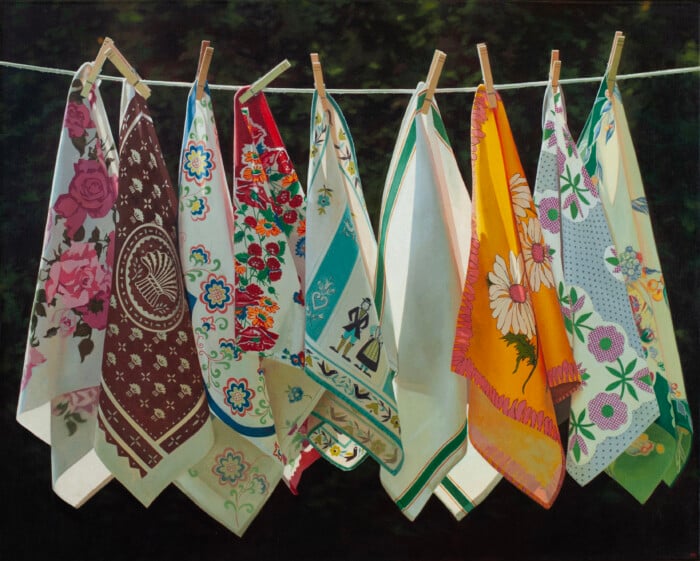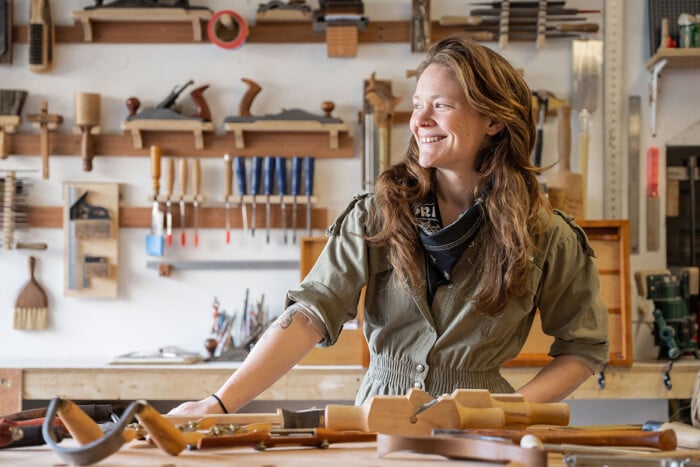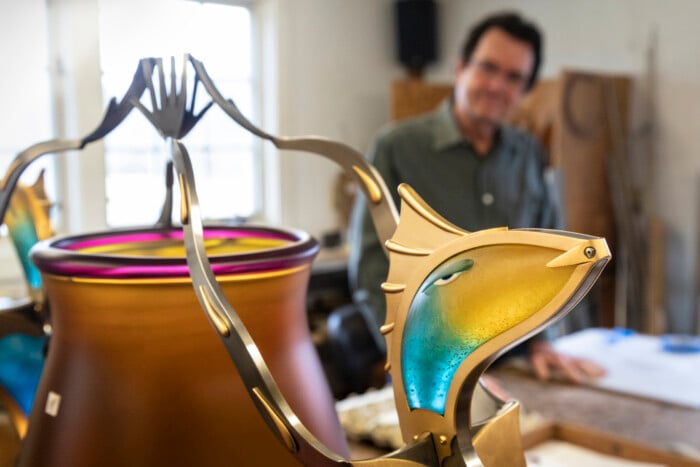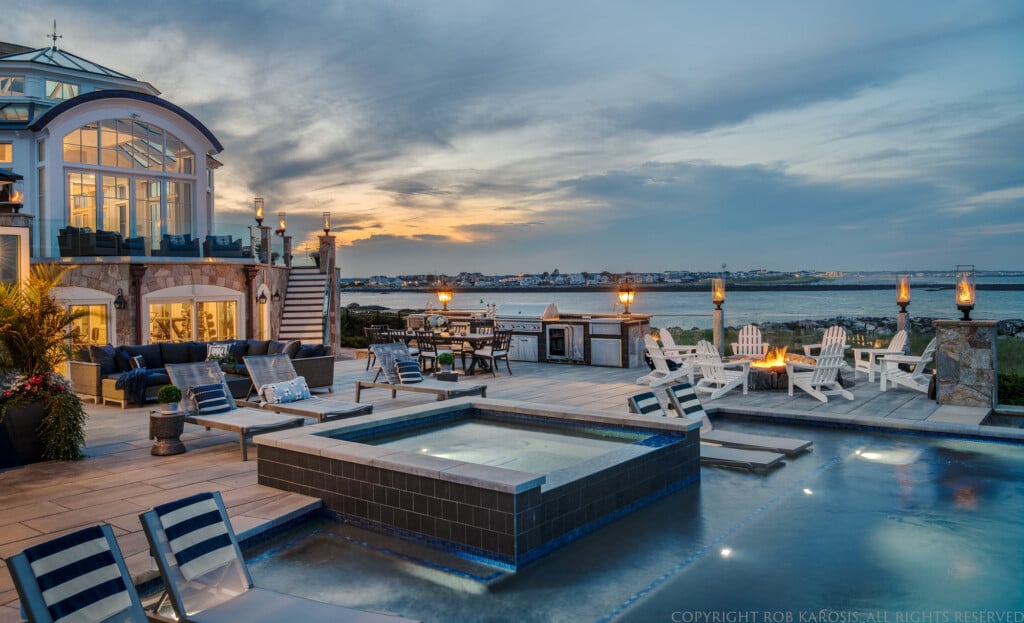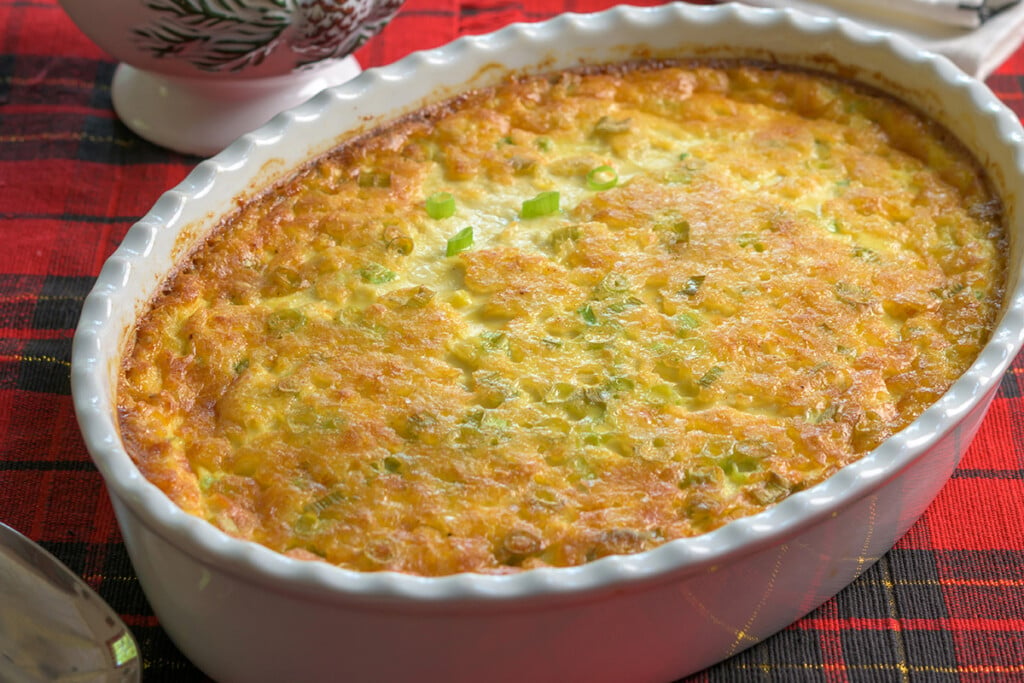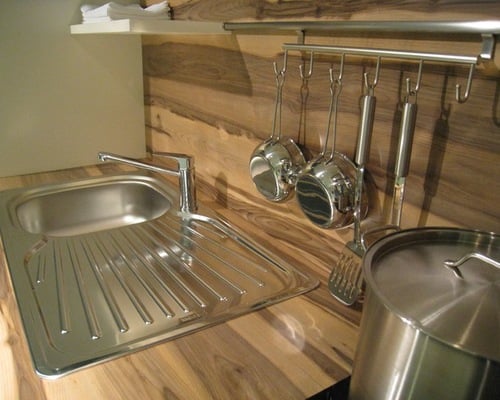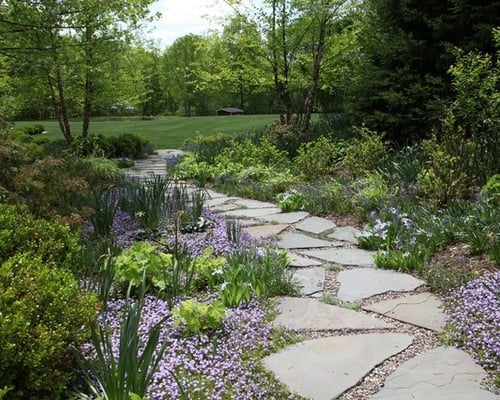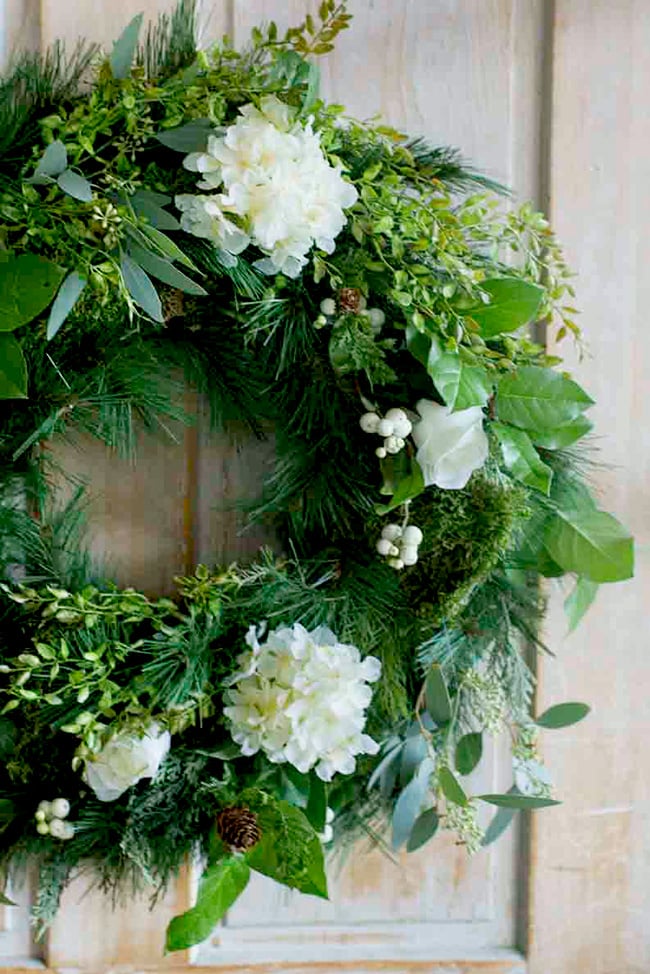Method of the Masters With Artist Erik Koppel
Artist Erik Koeppel’s striking landscapes evoke the classics.

Erik Koeppel in his studio in Jackson, NH.
Despite being a young working artist, New Hampshire-based landscape painter Erik Koeppel is quite comfortable with the past. As he creates awe-inspiring oils of the peaks and valleys near his home in the White Mountains, his passions lie with the traditions of the Hudson River School and the legacy of landscapes.
“In the long history of landscape painting, there are two major recurring philosophical themes that underpin the poetry of landscape painting,” says Koeppel. “It’s pastoral on one side and the sublime on the other.”
He explains that pastoral pictures aim to give the viewer comfort and peace by looking at a landscape that feels well cultivated and easy to live in, while sublime offers more of a feeling of awe of nature. “Sometimes those landscapes might even include a little fear and drama,” he says.
Koeppel believes the great thing about New Hampshire’s landscape is the ability to capture both extremes. “You can be in Jackson and walk the little 5-mile circuit and have tons of hay fields and cows — that pastoral, peaceful and lovely landscape,” he says. “But then, just 10 minutes north, you’ve got the wild weather of Mount Washington, with the rocky tops of the mountains above the tree line, which offer a lot of wonderful drama.”
While he says he goes through different phases in his work, Koeppel admits to leaning more toward the sublime. “I don’t know if it’s because my dad was Swiss and came from a long line of outdoorsy people,” he says. “So, it could be in my blood. I do work on peaceful landscapes, but I like the dramatic.” He says many people don’t realize how awe-inspiring New Hampshire’s environment can be. “I’m always painting and drawing outside,” he adds. “I’m inspired by the pastoral scenery close by, but Pinkham Notch and the National Forest are a short drive away, and they offer unbelievable aspects for painting.”
Koeppel’s mother’s family is from the Conway area, and his own family lived in Jackson when he was a child. “My dad bought The Wentworth hotel in 1991, when I was around 11, so my family moved here.” Koeppel showed an early interest in art. He received a Bachelor of Fine Arts from the Rhode Island School of Design, followed by a Master of Fine Arts in painting from the New York Academy of Art. “I was starting to establish myself in New York City as a landscape painter, but I wanted to move somewhere where I could be more in nature,” says Koeppel. “I was deciding between the Hudson Valley, where I had spent a lot of time painting the Catskills, and coming home to New Hampshire.” Ultimately, he realized he liked the New England landscape better. “I decided to come home to Jackson and put myself near whatever landscape I wanted to express. And I’ve never regretted that choice.”
Harkening back to a traditional style while managing a modern artist’s life is something Koeppel finds intriguing. “I went to RISD, where modernism was very much encouraged, and the pursuit of this direction would be more discouraged,” he says. “It was also challenging to learn when I first started, because very few people teach this painting style.”
There are various approaches to landscape painting, and Koeppel feels he is the most historically focused of his contemporaries. “There is a lot of traditionally influenced artwork being made and a lot of revival of interest in historical methods, but as far as people making artwork that is philosophically very similar without any sort of modern element — I would say I’m fairly unique in what I’m doing.”
He senses a solid connection to the past and feels he is conversing with the old masters, whether visiting museums and observing their brilliant ideas or working in his preferred medium, oil. “It is very time-tested, has technical advantages, and has a magical quality of romanticism and depth.
“Philosophically, I feel if a painting was relevant 150 years ago and seems to be still speaking to people today, then perhaps my work will also resonate in the future.” He especially hopes that capturing the essence of a wild landscape could lead to preservation efforts. “There is a significant conservation element in historical painting,” says Koeppel. “Artists were among the first to say maybe we need to protect these incredible landscapes.”
Koeppel and his wife, a traditional harpist, are new parents, and saving the land for future generations resonates with him. “Connecting with the environment is fundamental to everyone,” he says. “I believe everybody gets the beauty of landscapes. It is one of the most universal concepts.”
Koeppel sells his work through various galleries in New York, Boston and New Hampshire and does commissioned paintings. “I’ve been making my living as a painter for 15 years now, and so I have a lot of connections to people who buy and sell paintings all over the country and, in some cases, internationally.” Locally, he is honored to have several pieces at the Museum of White Mountain Art at the Jackson Historical Society, including a large-scale and eye-catching painting called “Autumn in the White Mountains.”
He hopes that people who see this and more of his New Hampshire-inspired work will venture into those natural environments for themselves. “I believe that experiencing the beauty of this magnificent landscape is among the best ways to happiness,” he says. “And my intention as an artist is to share that with others.”
For more information, visit erikkoeppel.com.
